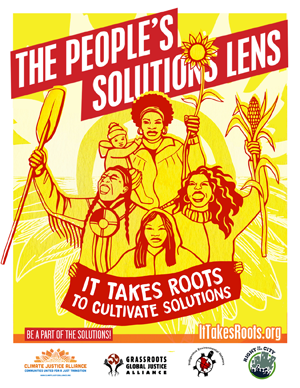It can be difficult to keep up with the ever-changing world of climate solutions, and not all “solutions” are inherently equitable or just. Fortunately, we’ve identified three straight-forward questions that can help you separate false solutions from the real deal:

1. Who makes the decisions?
Those closest to the problems will inevitably know the most about what the solutions need to look like. For any climate solution to truly work for Indigenous peoples, communities of color, and working class communities, it must embody the practice of community self-determination.
2. Who benefits?
The climate crisis is ecological, but it has its roots in systemic inequity that is both racial and economic. To address these root causes, authentic solutions must flip the existing dynamics around racial injustice, wealth extraction, and labor exploitation.
3. What else will this impact?
Sometimes environmental “solutions” can create new problems for other issues that we care about – e.g. housing, economic development, immigration, policing, mass incarceration, etc. Real solutions must work for ALL of our issues.
